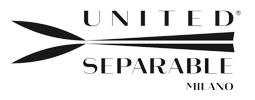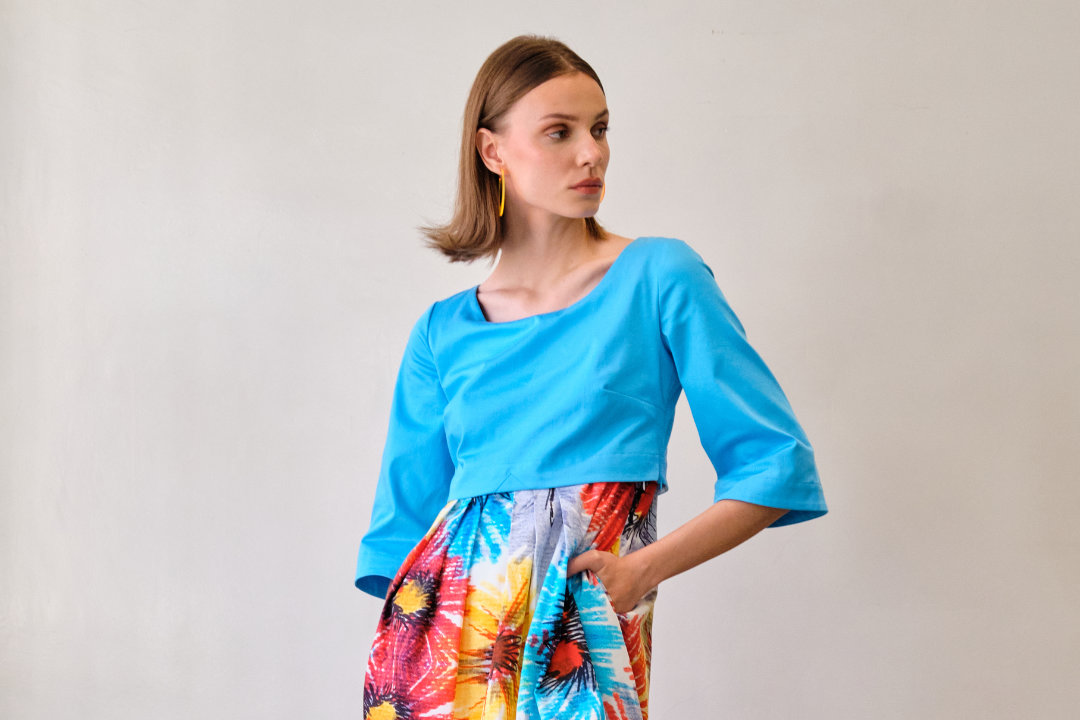I came up with the idea of the divisible dress during my business trips when I worked for Italtel spa, a very important Italian player in the telecommunications industries. Those were the 1980s, the years of Marisa Bellisario, a symbol of woman and manager for my generation and not only, the years of technological innovations, of the transition from analog to digital world, the starting point of the era we are currently living through.
‘Module’ and ‘Interoperability’ concepts had become fundamental to design in many sectors. The world of computing and telecommunications was going through an extremely important phase, in search of new solutions that would make knowledge, information and data available to everyone, with the development of the Internet. During my travels, I had to attend meetings and business events. The need to wear suitable clothing for different occasions and to have a comfortable and light travel bag, to combine elegance and practicality while “changing a lot with little” was an idea that was beginning to take shape.
SO, WHY NOT APPLY THESE CONCEPTS TO CLOTHING AS WELL?
I started to develop this idea concretely some years ago. I started from my sheath dress models and began to think about the separation of the dress into two components, a ‘top’ part, and a ‘skirt’ part. I tried different hooking solutions, experimenting with them in several dress positions. So many failed attempts. Then, a meeting with the Lanfranchi spa company made it possible to fine-tune the technical solution.
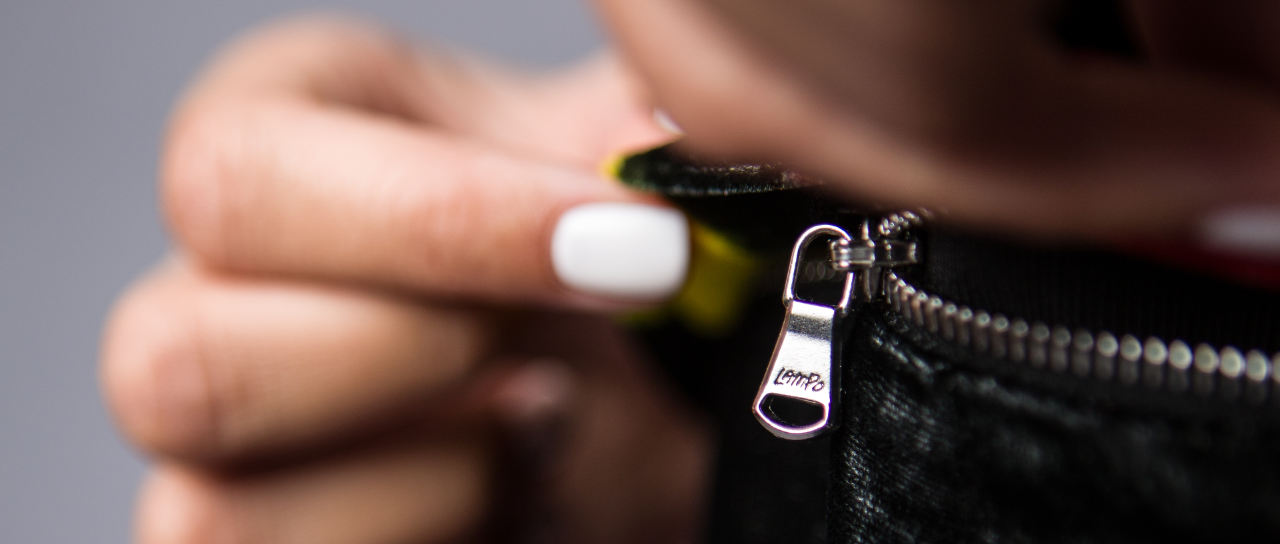
Having decided on the technological aspects and patented the solution, I realised that this way of interchanging the pieces also offered some aspects of creativity and free compositions of the dress that I had not immediately seen: combining colours, patterns, fabrics, in a free way according to personal inspiration. I told a friend and artist, Renato Geraci, about the project, and he not only encouraged me to pursue the idea, but also traced an artistic and stylistic outline of it by proposing a set of designs (‘patterns’) to be printed on fabrics with the aim of making our products exclusive and unique.
I started imagining and designing with enthusiasm for a new journey to be explored. My recurrent references and creative flow start from the aesthetics of the 1960s and 1970s, the years of my education, a student at the Beccaria High School in Milan, an inspiring and decisive period also for the choice of my later studies in Mathematics. It is from that experience that I take my ideas, helped by my memories, family photos and old fashion magazines in the country house in a small village, Sangiano, in the Varese district, near the Lombardia side of Lake Maggiore. I revisited those years by selecting images, shapes, colours, styles, fabrics, reading monographs and attending courses.
The idea of modular design in fashion is by no means an invention of today, but dates back to the beginning of the last century, when several designers began to explore this concept, introducing separate and co-ordinated pieces, to arrive at modular solutions in different types of clothing. The project I had in mind wanted to reach a modularity solution with a ‘standardised’ hooking system to ensure interchangeability over time, in a continuous reuse and renewal. I tried to give a contemporary, metropolitan style to the designs of the clothes I had in mind. I grew up professionally in the very early digital era, so the tool I use for sketching the clothes is powerpoint, a very schematic and geometric way to see my solutions and validate the combinations of patterns, colours and prints immediately. The collaboration with a historic pattern maker studio near Varese made it possible to translate my sketches into something concrete, giving them form, line and volume.
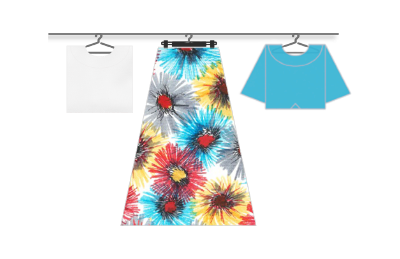
The research of high-quality yarns and fabrics began visiting companies in the textile districts near Milan (Como, Biella and Borgosesia, Varese). I do sincerely thank all the people I met and that, with their willingness and patience, opened me up to an extraordinary world of skills and passion for their work, and helped me develop the first prototypes and evaluate the first solutions. Starting from the raw materials, yarns, and raw fabrics, and following their processing for printing and dyeing, allowed me to verify how much attention we had to pay towards environment, especially for some phases of the production processes, and to materials, their origins, and compositions. Recovering and refreshing my knowledge on environmental impact analysis, I decided to move right from the beginning by following the impact assessment guidelines promoted by B Lab, the non-profit organisation that certifies B-Corporations, with the deep conviction that every choice we make requires awareness of the side-effect throughout the production chain. The involvement of companies and partners that share an ethical and sustainable vision has become the fundamental driver in the choice of our suppliers.
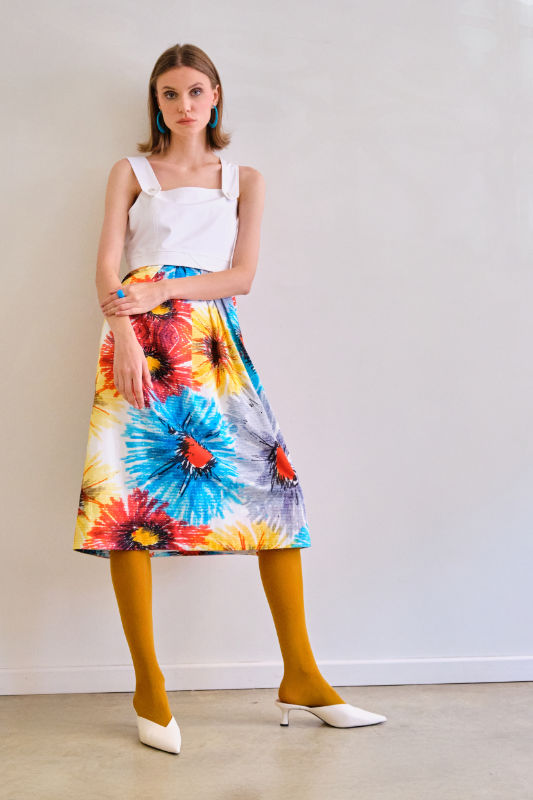
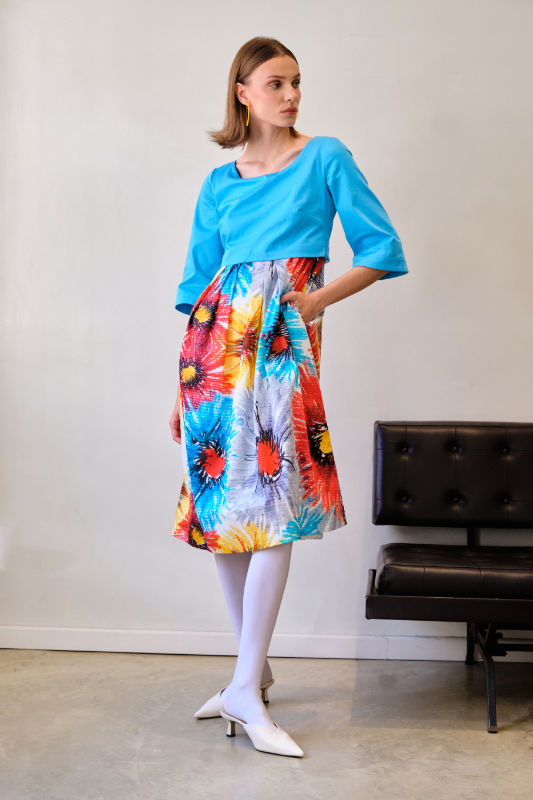
This is the journey of the creation of our startup. Based in Milan, Minimal Path is a family startup: my son Federico participates in it playing an indispensable role as a cultural-anagraphic mediator with respect to the technological evolutions on the web, with a great passion for design (he attends the School of Design of the Milan Polytechnic), for new, refined and independent brands, and with an innate multi-cultural approach with no boundaries, like all those who were born at the end of 2000.
Our United Separable® project puts modularity at the forefront of our product design process.
Starting in 2019, the first period was characterised by analysis, studies, and research of materials, exploring shapes, styles, yarns, fabrics to tell the story of my places of memory, in the versatility of the atmospheres of those years interconnected to contemporaneity and awareness of living.
The Covid emergency of these two years – 2020 and 2021 -, the slowdown of all activities and the change it caused allowed us to fine-tune the entire project, working on circular economy issues, on style, on the definition of details and variants that allow us to present in a showroom in Milan our proposal of a system of pieces, which can be freely interconnected, according to one’s creativity and daily needs, the Minimal Box. These two years have been crucial for the consolidation of the supply chain, the team of collaborators and the associations that are supporting us along this path.
Our market strategy starts from the awareness that clothes need to be tried on, fabrics need to be touched. The material aspect and attention to detail are fundamental to differentiation and commercial success. Therefore, we are in a continuous search for boutiques and shops that share our project and help us in our proposal and customer relations. Our plans also include an online proposal, soon.
